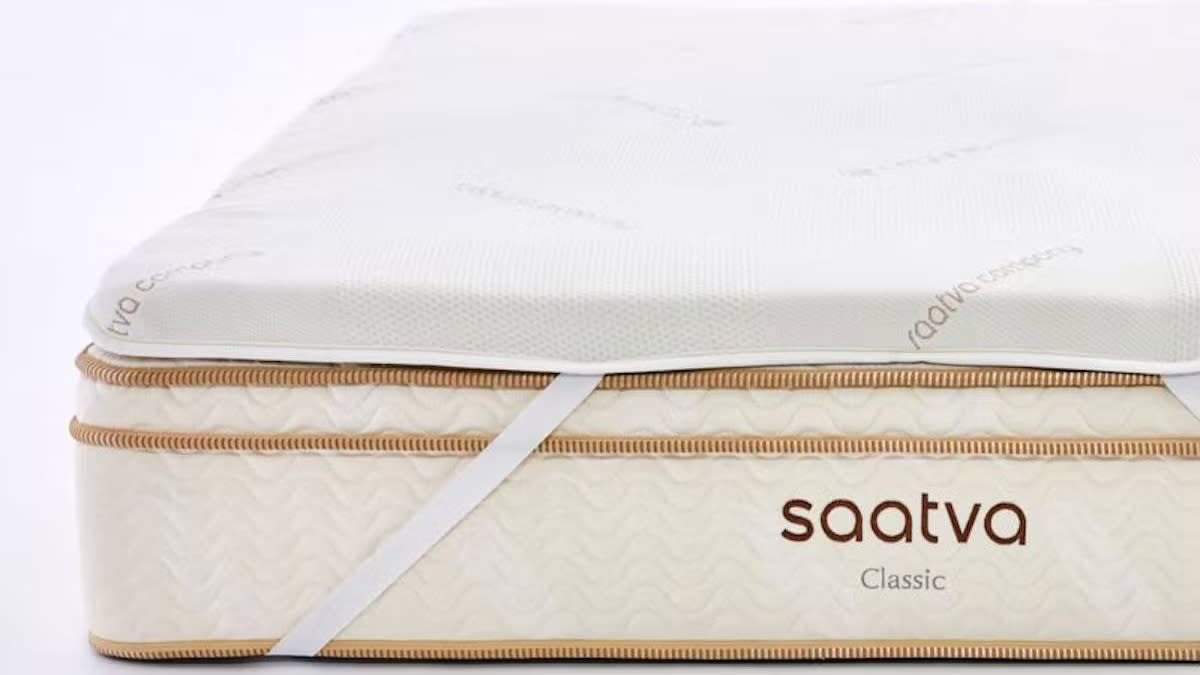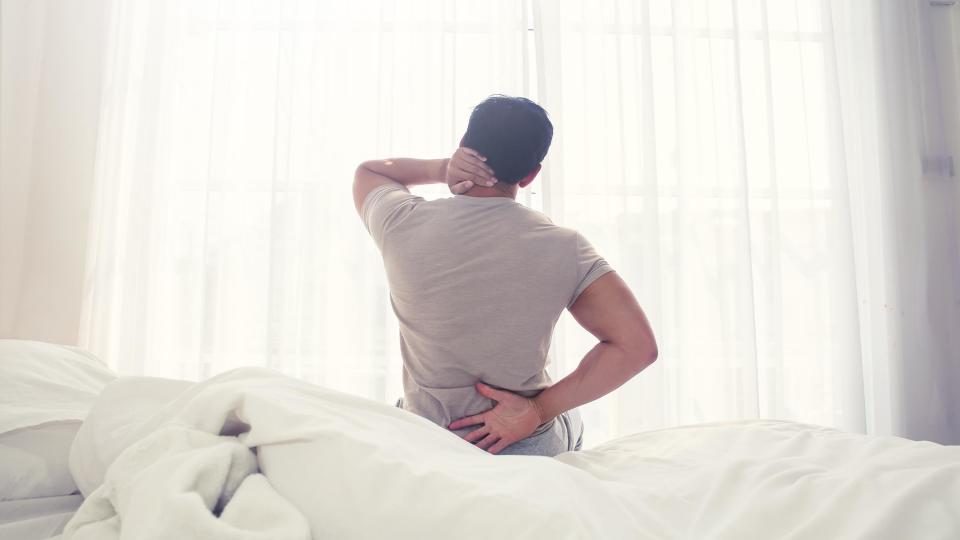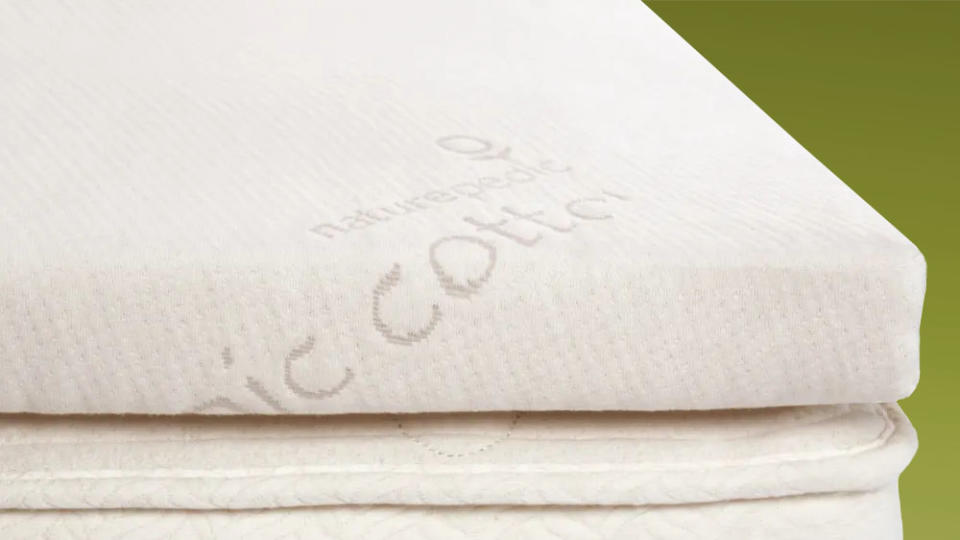Five mistakes people make when buying a mattress topper for back pain

The best mattress toppers for back pain can provide your mattress with additional support, helping to keep your spine correctly aligned and relieving aches and pains. Sleeping on the wrong type of mattress can worsen existing back pain and even cause painful new ailments. However, the right mattress topper can go some way to rectifying this, helping to provide you with the targeted lumbar support you need in order to get a decent night’s sleep.
Quality sleep is crucial to our overall health, but back pain is one of the biggest disruptors of our rest. Whether you’re struggling to get comfortable or are repeatedly waking up throughout the night in agony, a mattress topper is a cost effective way of providing some back pain relief. But where to start? Just like the best mattresses of 2024, the best mattress toppers vary from product to product. From firmness level, material, and primary function, each mattress topper is different, which means that they won’t all be a suitable solution to your back pain.
As sleep experts and highly experienced mattress testers, we picked the Saatva Graphite Mattress Topper as the best mattress topper for back pain, thanks to its lumbar support, pressure relief and temperature regulation. However, starting at $325 for a twin, the Saatva Graphite sits firmly in the premium price category. So if you’re still on the hunt for the best mattress topper for your back pain, we have identified five common mistakes people make when shopping. Let’s take a closer look.
1. You're going on price
At Tom’s Guide, we value getting the best price possible for our sleep products and make it our business to stay across the latest mattress sales. However, the cheapest mattress topper won’t necessarily make it the best mattress topper — and the most expensive mattress topper won’t automatically make it the best mattress topper, either.
Always buy the best mattress topper you can afford, but be led by product specification rather than the price tag. The key things to look out for are firmness levels, depth, and materials. A thin, unsupportive mattress topper with the latest in cooling technology won’t provide any relief to your back pain.
2. It doesn't have the right support
Tackling the root cause of back pain is complex, but one thing all back pain sufferers have in common is the need for a supportive sleep surface. In order to keep your spine in correct alignment and to avoid putting it under further strain, a mattress topper can help bolster your current mattress’s support level.

However, in order to garner the best pain-relieving results, your mattress topper needs to suit your specific sleep needs. That means, if your back pain is made worse because your mattress is too soft, you should choose a mattress topper with a firmer support level. If your firm mattress is putting too much pressure on sensitive body parts, opt for something a little softer. The best mattress for back pain is usually medium to firm, but there isn’t a one-size-fits-all solution here.
3. It's the wrong material
Like mattresses, mattress toppers come in a range of different materials. The material can dictate the mattress topper’s key function, so it’s important that you’re aware of what you’re buying. The best mattress toppers often come in a combination of different materials to provide a variety of different benefits. Mattress topper materials include:
Memory Foam – Memory foam toppers react to your body heat to mold to your body to help provide pressure relieving support. Memory foam toppers are great for those who want that typical ‘sink in’ feel, but be warned — memory foam is prone to retaining heat, so hot sleepers looking for a memory foam mattress might require additional cooling properties.
Gel-infused – If a mattress topper is gel-infused (or charcoal or graphite), you know that its primary function is to be cooling as these materials are known for their heat-wicking properties. While this doesn’t necessarily mean that it won’t be good for your back pain (the Saatva Graphite is our top choice of the best mattress toppers for back pain), ensure that it also has the depth and support level that you require.

Latex – Natural latex is bouncy and breathable — and expensive. However, latex is known for its durability, so a latex mattress topper will likely last longer than other mattress toppers. Latex also makes it easier to change position easily, which is crucial for back pain sufferers.
Synthetic Filled – Usually made from either hollow fiber or microfiber, these toppers are generally slightly cheaper than other materials. Microfiber toppers are usually soft, but are great for allergy sufferers.
Wool – Wool toppers are often organic, and wool is a naturally temperature regulating material. A wool topper is durable and provides a softer feel to the topper, keeping you cool in the summer and cozy in the winter.
4. You've bought a pad instead of a topper
Mattress toppers range between two and four inches deep and have the potential to completely alter the support and comfort level of your mattress. Although mattress pads might look similar, they don’t provide the same level of support or deep layer of cushioning. Mattress pads are cheaper and are designed to add a layer of plushness to your existing mattress, but won’t provide any meaningful pressure relief or spinal support for back pain sufferers. You can read more about the key differences between mattress pads and mattress toppers in our mattress pad vs mattress topper comparison piece.
5. What you really need is a new mattress
Mattress toppers are an excellent way to prolong the life of your current mattress, as well as providing additional lumbar support and deep layer of cushioning for a new mattress that doesn’t quite meet your comfort needs. However, even the best mattresses have a shelf life, and if yours is showing signs that it needs replacing — such as dipping or sagging — it might be a better idea to skip to mattress topper altogether and invest in a new mattress.
We recommend replacing your mattress every six to ten years, so if yours is already older than that, it might be time to start shopping for a new mattress instead. If you don’t have the budget for a new mattress right now, a mattress topper will certainly help relieve back pain symptoms in the short term - but it won’t be a lasting solution to a mattress that needs replacing.

